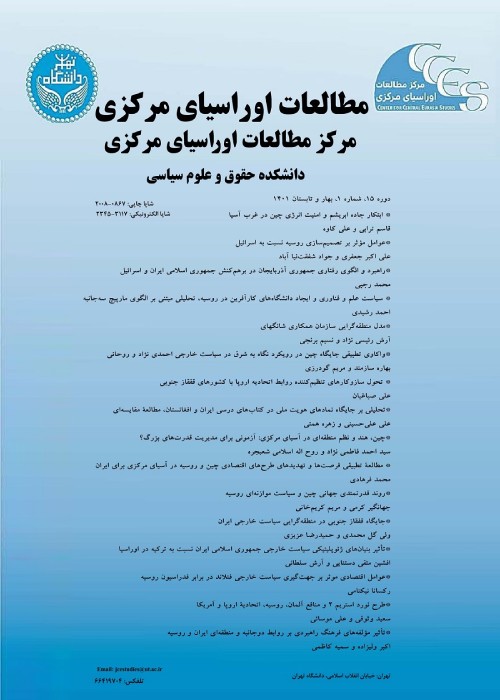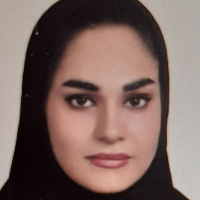Regionalism Model of Shanghai Cooperation Organization
Regionalism has been introduced as a conventional model of interaction in international relations and it is also a different model of exercising power in international arena which is based on values such as cooperation, unity and peace. Regionalism has undergone a transformation since the Cold War. The classical model of regionalism was the European model and some developing countries tried to copy the European regionalism model and implement it in their regions. But the European regionalism model was based on the goals and needs of European countries and was not suitable for other regions so developing countries have designed and implemented new models of regionalism. Modern regionalism does not have the elements of the European-oriented model. Organizations such as NAFTA, ASEAN and the Shanghai Cooperation Organization are examples of new and different models of regionalism that have broken the monopoly of the European model of regionalism and have launched their own model of regionalism. The Shanghai Cooperation Organization is one of the important regional organizations that offers a new model of regionalism, and the Islamic Republic of Iran is also a member. In this article, we examined the interaction pattern of the members of the Shanghai Cooperation Organization, the mechanisms of convergence and the challenges and perspectives of the regionalism of this organization.Research Question: The main question of this research is what is the regionalism model of the Shanghai Cooperation Organization? What are the interactive patterns and mechanisms for convergence in the Shanghai Cooperation Organization?Research Hypothesis: Considering that in this research we have used the systematic exploration strategy and historical review technique, we have not presented a hypothesis for this research because the main question of this article is about the regionalism model of the Shanghai Cooperation Organization and the answer to this question is related to the issues objectives and existing mechanisms in the structure of the Shanghai Cooperation Organization. Therefore, the answer to such a question requires examining the structure of this organization, documents, reports and historical events related to the convergence of this organization, so in this research we did not pay attention to the hypothesis or its possible answer.
To answer the main question in this research, the systematic exploration strategy and historical review technique have been used. In this strategy, the author does not provide any hypothesis for the main question and instead of checking the validity of the hypothesis, he directly refers to the evidence. Documents, reports, historical events, books and articles are the sources that are examined to answer the main question. Therefore, based on the historical study technique, we examined a historical period from 2001 until now, that is, since the establishment of the Shanghai Cooperation Organization until now and we examined the sources available in this historical period and we were able to identify the patterns of internal interaction, the mechanism to identify the convergences, challenges and perspectives of the regionalism of the Shanghai Cooperation Organization.
The findings show that since the establishment of the Shanghai Cooperation Organization, two different models of regionalism have been formed in this organization. The first model was common since the establishment of the organization until 2017, we call this model "guided", in fact, the structure of this regionalism model was "2 + 4". Two countries, Russia and China, were leading four other Central Asian countries towards regionalism. Russia and China provided financial support to the Shanghai Cooperation Organization and provided practical ideas and plans to strengthen regionalism. But after the two nuclear countries India and Pakistan joined this organization in 2017, the second model of regionalism began. In fact, the "guided" model was changed to the "pervasive" model. In this model, the "2 + 4" pattern has been changed and different branches have been created in the organization. The leadership role of Russia and China has decreased and each country is trying to independently use the regionalism capacities of this organization. Based on this pervasive model, Iran's permanent membership has been accepted and Turkey's permanent membership is also being considered. With the increase in the number of members and the diversity of their interests, the fields of activity of the organization have expanded and various mechanisms have been launched to strengthen convergence. These mechanisms work in different fields including security, economic and cultural. These mechanisms are the most important factors for the deepening of convergence in the Shanghai Cooperation Organization because they provide the conditions for mutual trust between the member countries of the organization and facilitate cooperation and participation.
The conclusion of this research is that the concept of convergence has been continuously enriched and developed since the establishment of the Shanghai Cooperation Organization. Convergence mechanisms have become more efficient and advanced and various fields of cooperation have expanded, so the possibility of cooperation in this organization has been facilitated and the motivation for the effective participation of the Shanghai Organization in global governance has increased. The organization now has the capacity to act as a driving force for the reconstruction of the new world order, but it should not be forgotten that the organization lacks a "strong collective identity", and there are many internal conflicts among members. The different religions, languages, cultures and histories of each of the member countries prevent the formation of a common identity and the conflicts between India and China, India and Pakistan, as well as Russia and China are so deep that we cannot easily ignore them. Therefore, the Shanghai Cooperation Organization does not have a sufficient condition (strong collective identity) to achieve complete convergence, but in general, the organization has been able to maintain mutual trust among members with agreements and annual meetings of the heads of member states and joint projects. Therefore, the Shanghai Cooperation Organization has the necessary condition (mutual trust) for regionalism.
- حق عضویت دریافتی صرف حمایت از نشریات عضو و نگهداری، تکمیل و توسعه مگیران میشود.
- پرداخت حق اشتراک و دانلود مقالات اجازه بازنشر آن در سایر رسانههای چاپی و دیجیتال را به کاربر نمیدهد.



